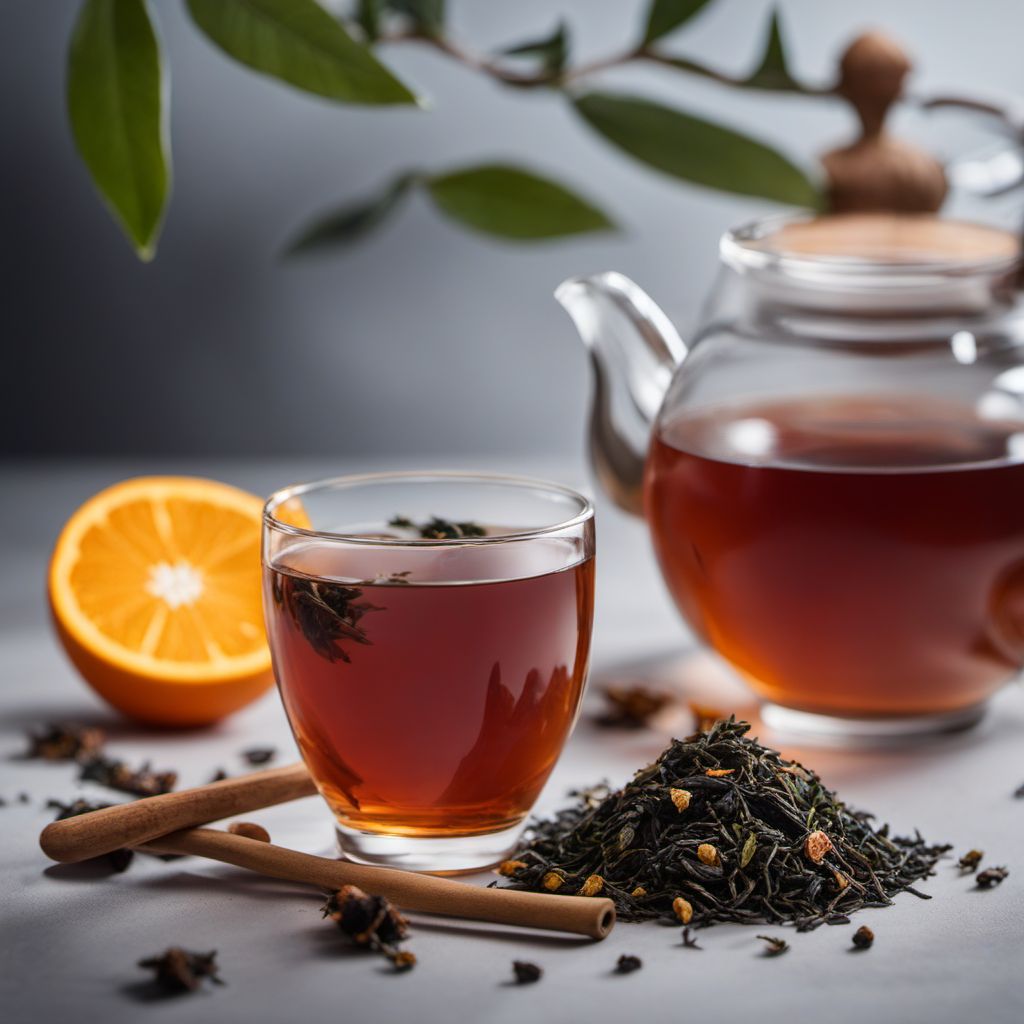
Ingredient
Tea leaves and stalks, fermented
The Art of Fermented Tea: Unlocking the Richness of Flavor and Health Benefits
Fermented tea leaves and stalks, also known as post-fermented tea or dark tea, undergo a unique fermentation process that transforms their flavor, texture, and appearance. The leaves and stalks are carefully harvested, wilted, and then fermented under controlled conditions, resulting in a rich, earthy flavor with hints of sweetness and a smooth, velvety texture. The leaves and stalks are typically dark in color, ranging from deep brown to black, and have a distinct aroma that is both comforting and invigorating.
Origins and history
Fermented tea leaves and stalks have a long and storied history, originating in China over a thousand years ago. This type of tea, known as "pu-erh" in Chinese, was traditionally produced in the Yunnan province. It was highly valued for its medicinal properties and was often used as a tribute to the emperors. Over time, the production and consumption of fermented tea spread to other regions, including Tibet, Mongolia, and Southeast Asia, where it became an integral part of their cultural and culinary traditions.
Nutritional information
Fermented tea leaves and stalks are rich in antioxidants, polyphenols, and beneficial bacteria, which contribute to their potential health benefits. They are also low in calories and contain trace amounts of vitamins and minerals.
Allergens
There are no known allergens associated with fermented tea leaves and stalks.
How to select
When selecting fermented tea leaves and stalks, look for leaves that are tightly compressed and have a consistent color throughout. Avoid leaves that appear moldy or have an unpleasant odor. Additionally, consider purchasing from reputable tea producers or specialty stores to ensure the highest quality.
Storage recommendations
To maintain the freshness and quality of fermented tea leaves and stalks, store them in an airtight container in a cool, dry place away from direct sunlight. Avoid exposure to strong odors, as the leaves can absorb them easily. Proper storage will help preserve the flavor and aroma of the tea for an extended period.
How to produce
Producing fermented tea leaves and stalks requires specialized knowledge and equipment. It is best left to experienced tea producers who follow traditional fermentation techniques. However, tea enthusiasts can explore the world of fermented tea by purchasing ready-made products from trusted sources.
Preparation tips
To prepare fermented tea leaves and stalks for consumption, rinse them briefly with hot water to awaken their flavors. Then, steep them in hot water for a few minutes, adjusting the steeping time to achieve the desired strength. The leaves and stalks can also be used in cooking, such as in stir-fries, soups, or as a seasoning for rice dishes, adding a unique depth of flavor.
Culinary uses
Fermented tea leaves and stalks are commonly used to brew a rich and aromatic cup of tea. They can also be incorporated into various culinary creations, such as marinades, dressings, and desserts, to infuse a distinctive earthy flavor.
Availability
Fermented tea leaves and stalks are commonly available in regions where tea production is prevalent, such as China, Taiwan, Myanmar, and parts of Southeast Asia.


